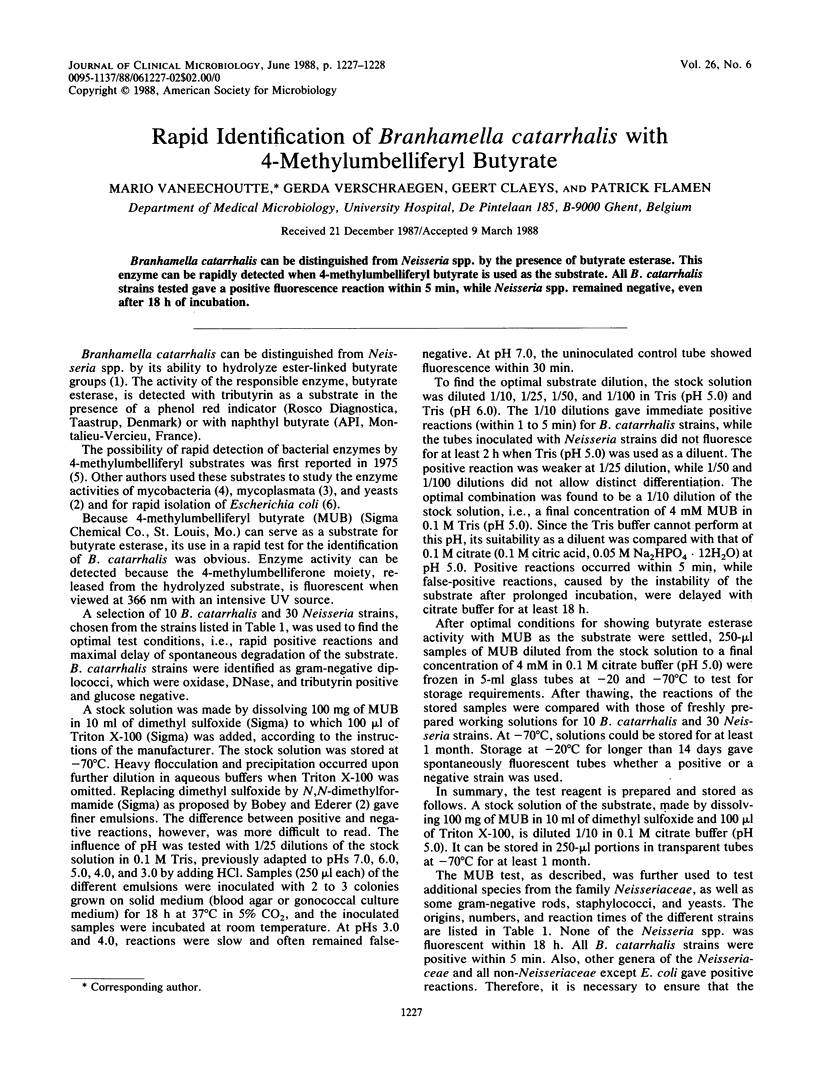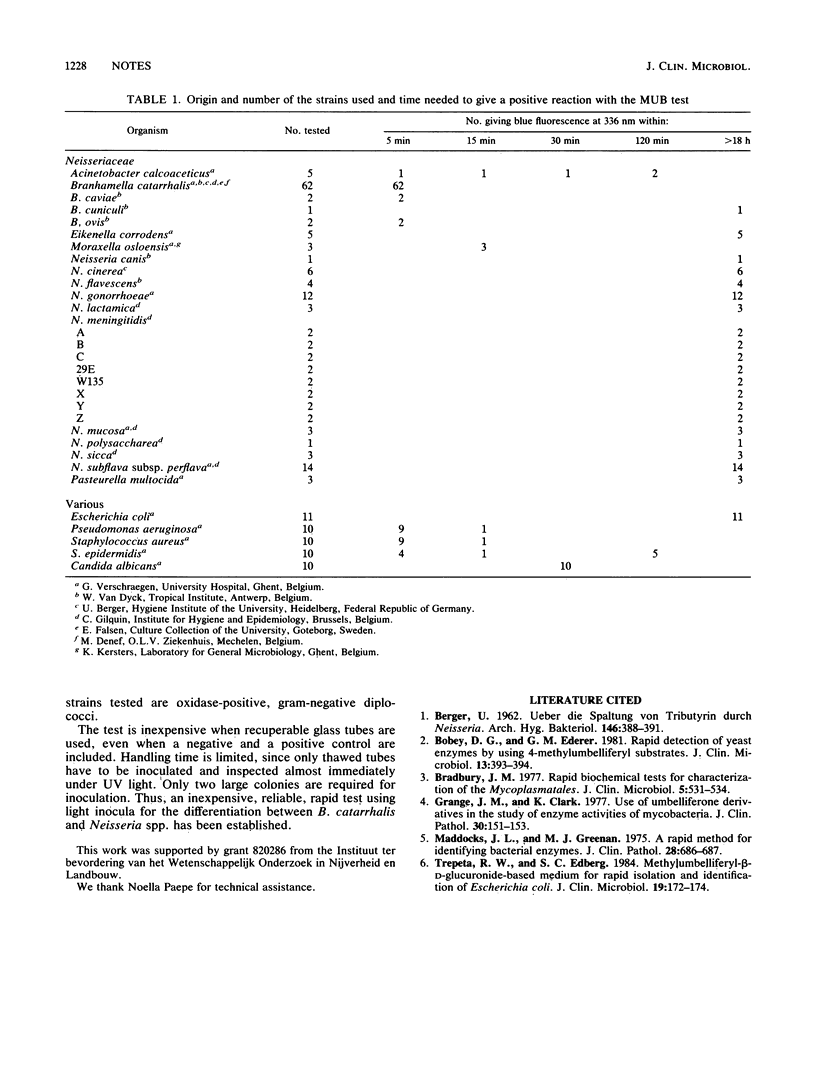Abstract
Branhamella catarrhalis can be distinguished from Neisseria spp. by the presence of butyrate esterase. This enzyme can be rapidly detected when 4-methylumbelliferyl butyrate is used as the substrate. All B. catarrhalis strains tested gave a positive fluorescence reaction within 5 min, while Neisseria spp. remained negative, even after 18 h of incubation.
Full text
PDF

Selected References
These references are in PubMed. This may not be the complete list of references from this article.
- Bobey D. G., Ederer G. M. Rapid detection of yeast enzymes by using 4-methylumbelliferyl substrates. J Clin Microbiol. 1981 Feb;13(2):393–394. doi: 10.1128/jcm.13.2.393-394.1981. [DOI] [PMC free article] [PubMed] [Google Scholar]
- Bradbury J. M. Rapid biochemical tests for characterization of the Mycoplasmatales. J Clin Microbiol. 1977 May;5(5):531–534. doi: 10.1128/jcm.5.5.531-534.1977. [DOI] [PMC free article] [PubMed] [Google Scholar]
- Grange J. M., Clark K. Use of umbelliferone derivatives in the study of enzyme activities of mycobacteria. J Clin Pathol. 1977 Feb;30(2):151–153. doi: 10.1136/jcp.30.2.151. [DOI] [PMC free article] [PubMed] [Google Scholar]
- Maddocks J. L., Greenan M. J. A rapid method for identifying bacterial enzymes. J Clin Pathol. 1975 Aug;28(8):686–687. doi: 10.1136/jcp.28.8.686. [DOI] [PMC free article] [PubMed] [Google Scholar]
- Trepeta R. W., Edberg S. C. Methylumbelliferyl-beta-D-glucuronide-based medium for rapid isolation and identification of Escherichia coli. J Clin Microbiol. 1984 Feb;19(2):172–174. doi: 10.1128/jcm.19.2.172-174.1984. [DOI] [PMC free article] [PubMed] [Google Scholar]


